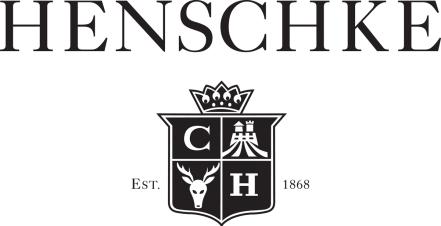Henschke
Julius Riesling
Henschke
Julius Riesling
Cyril Henschke developed the Henschke reputation for premium riesling wines as early as the 1950s from the vineyard areas of Eden Valley, Keyneton and Springton in the Eden Valley wine region. This region provides ideal ripening conditions for the riesling grape and has a unique track record of exceptional ageing potential for the variety. The Eden Valley riesling vineyard is planted on sandy loam over gravel and bedrock with patches of clay. The wine is named after ancestor Julius Henschke, a highly acclaimed artist and sculptor.
Wine Production
Fermented in tank and bottled post-vintage to preserve the delicate aromatic fruit characters
Tasting Notes
Pale straw with green/gold hues. Exquisite aromas of flowering citrus and bath salts,concentrated white currants, lemons, limes and grapefruit zest, with hints of frangipani and green peppercorns. The palate is pure and bursting with ripe limes and succulent white currant flavours, with layered mineral talc-like texture and pure lines of zesty acidity for a very long, fine, dry finish.
Food Pairing
BLUE SWIMMER CRAB WITH SALMON ROE
Cyril Henschke developed the Henschke reputation for premium riesling wines as early as the 1950s from the vineyard areas of Eden Valley, Keyneton and Springton in the Eden Valley wine region. This region provides ideal ripening conditions for the riesling grape and has a unique track record of exceptional ageing potential for the variety. The Eden Valley riesling vineyard is planted on sandy loam over gravel and bedrock with patches of clay. The wine is named after ancestor Julius Henschke, a highly acclaimed artist and sculptor.
Wine Production
Fermented in tank and bottled post-vintage to preserve the delicate aromatic fruit characters
Tasting Notes
Pale straw with green/gold hues. Exquisite aromas of flowering citrus and bath salts,concentrated white currants, lemons, limes and grapefruit zest, with hints of frangipani and green peppercorns. The palate is pure and bursting with ripe limes and succulent white currant flavours, with layered mineral talc-like texture and pure lines of zesty acidity for a very long, fine, dry finish.
Food Pairing
BLUE SWIMMER CRAB WITH SALMON ROE
Brand Materials
Vineyard & Production Info
Winemaking & Aging
About the Vineyard
A later start to picking and a mild period of ripening finished with the last grapes being picked in mid-May. A wet 2016 winter gave us a good foundation for our predominantly dry -grown vines on their own roots, and a cool, wet and fiercely windy spring followed, with a slightly higher spring rainfall than the Barossa Valley, which delayed flowering, though conditions during set meant that yields were at average levels. A mild summer with regular rainfall events followed, which allowed the grapes to reach full physiological maturity.





